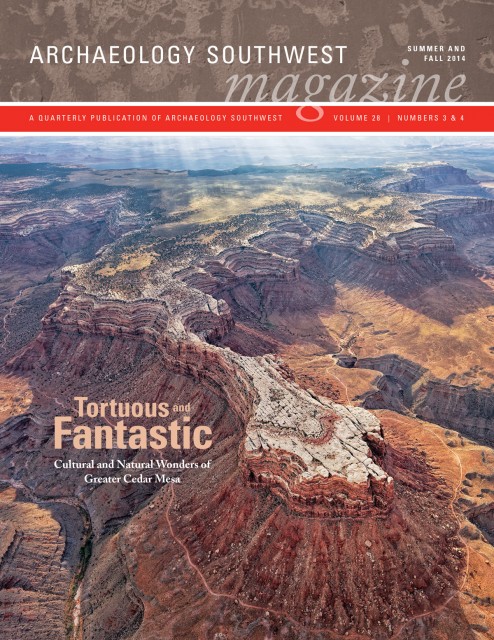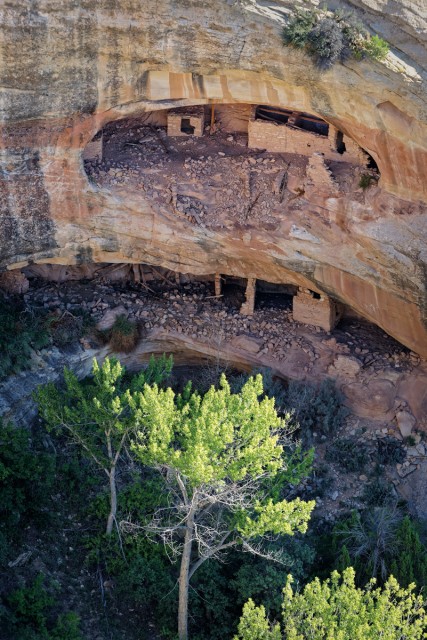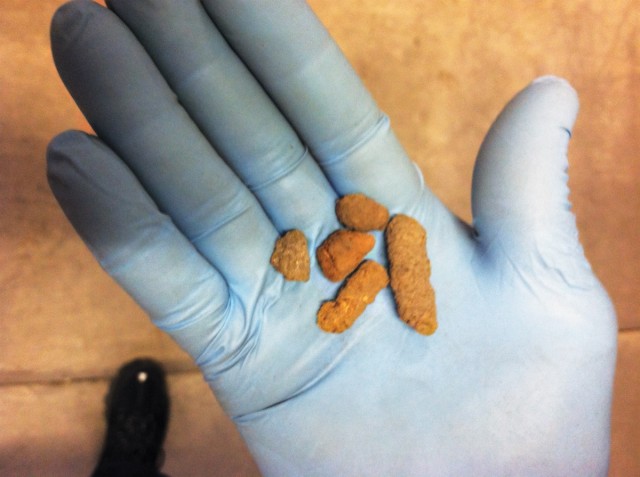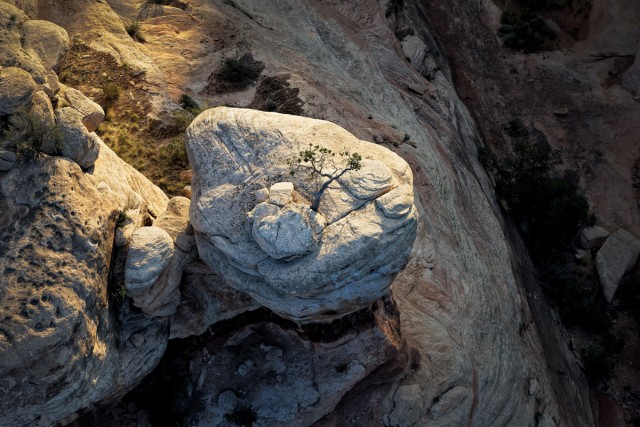- Home
- >
- Preservation Archaeology Blog
- >
- From the Editor’s Desk

No doubt about it, this issue is a whopper. The biggest we’ve ever done, in terms of length, scope, and visual impact. Issue editor Bill Lipe, Archaeology Southwest president Bill Doelle, aerial photographer (and frequent Archaeology Southwest collaborator) Adriel Heisey, and I lovingly labored over it for an entire year (52 pages, one for each week). Birth metaphors are obvious; I can’t stop grinning as I finally hold it in my hands. (Well, OK, I actually carry it everywhere, cradled in my elbow, and I gently pat it now and then. Don’t judge.)
What a privilege and a pleasure it has been to work with the estimable Bill Lipe! The first outcome I’d like to celebrate is thus a personal one: the joy our email exchanges on Cedar Mesa, writing, and life have brought me. We’re pen pals for good, and I’ll always treasure 2014 as the year of Bill and Cedar Mesa.
The second outcome is one tied to any issue of the magazine: readers less familiar with certain places or aspects of Southwestern archaeology are introduced to another cultural landscape through the eyes and minds of some of the people who love it best. And Cedar Mesa, in all its glory and story, certainly elicits powerful emotions from those voices—Stewart Aitchison, Sally Cole, William Davis, Vaughn Hadenfeldt, Winston Hurst, Donald Rommes, Jonathan Till, and James Willian, among others. Readers won’t help but be affected.

A third outcome necessitates a confession: I decided to break a cardinal rule of archaeological interpretation for the public. We published a graphic showing a stratigraphic column and profile. These make perfect sense to archaeologists…not so much to the uninitiated. But this one—this one is special. Turn to page 28 and hear me out.
On the intellectual side, we did this to explain one aspect of how archaeology “works.” We drew upon the connection between Bill Lipe’s and Fred Blackburn’s discussions of the Wetherills’ use of stratigraphic reasoning in Greater Cedar Mesa in the 1890s and the important information about Basketmaker lifeways R. G. Matson, Lipe, and others have learned from the layers in one deep trash heap in Turkey Pen Cave. We thought it was important to show readers what kinds of organic material yielded dates, and how those dates and samples work together to help archaeologists understand when people were present at that location—as well as what those people ate, what animals they kept, what those animals ate, and so on. Nearly as important from a Preservation Archaeology perspective is the fact that samples excavated almost 40 years ago continue to be analyzed with new and developing methods, yielding ever-more-refined understanding of farmers’ lives on Cedar Mesa some 1,600 years ago.
On the other hand, I admit to a slightly perverse wish to offset Heisey’s and Don Rommes’s stunning photographic views of the natural and cultural wonders of Greater Cedar Mesa with some nitty-gritty stuff. Some of our best information about the past, even in such an astonishingly beautiful place, comes from much humbler—and sometimes kinda icky—remains. Life has ever been a messy business. Thanks to graphic designer Catherine Gilman for doing justice to these less glamorous but quite visceral archaeological data. Let me know if breaking that rule was a good thing.

A fourth (potential) outcome comprises future studies. The modern work reported in this issue illustrates, yet again, the fruitfulness of conservation-oriented archaeological research—archaeological survey, mapping, remote sensing, limited or targeted excavation, and examination (and re-examination) of existing archaeological collections. It seems clear that such low-impact approaches are favored by students of Cedar Mesa. Moreover, Laurie Webster’s survey of perishable artifacts recovered in the 1890s and currently dispersed among several institutions will surely inspire several theses and articles. (Note to whoever studies those enticing thirty-some ancient wooden agricultural implements: we especially look forward to your work and expect at least a guest blog post here.)

Finally, there is the outcome we who participated in this issue are committed to: better federal protections for Greater Cedar Mesa and its marvels. Josh Ewing and the Friends of Cedar Mesa lead this charge from Bluff, Utah. I am confident that you will share our commitment upon reading this issue. So, please, visit with respect; extend that ethic to traces of Ute, Navajo, and historical lifeways you will now recognize, thanks to Hurst and Willian; share this issue and the cause with your friends and colleagues; support the Friends of Cedar Mesa; keep up with developments at the Friends’ website and Facebook page, as well as ours; and contact your state and federal representatives at key times. Let’s get this done.
Read Josh Ewing’s follow-up post, “What Does Protection Really Mean?”
Explore the News
-
Join Today
Keep up with the latest discoveries in southwestern archaeology. Join today, and receive Archaeology Southwest Magazine, among other member benefits.